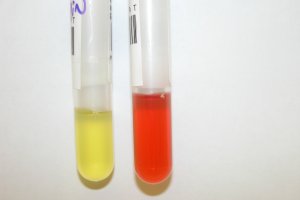The measurement of the anti-Xa activity is to test the ability of anticoagulants inhibit factor Xa and, accordingly, the coagulation.
It may be useful to adjust the doses of low molecular weight heparin (LMWH) and drugs with specific anti-Xa activity (such as fondaparinux [Arextral]).
 Sample:
Sample:
The anti-Xa activity should be measured at the peak of activity, that is to say:
• 3 to 4 hours after the last injection for curative treatment with LMWH in two injections;
• 4 to 6 hours for LMWH given once daily dosing.
Adhere to the sampling rules for hemostasis tests (see Samples).
Specify the laboratory the drug name and dosage (reagents differ anticoagulants).
Results:
Results are expressed in International Units (IU) per mL in reference to an international standard.
Four hours after injection of LMWH, anti-Xa activity (blood heparin) is expected:
• when heparin is injected as a preventive measure: from 0.3 to 0.45 IU / mL
• when used to treat venous thrombosis: from 0.5 to 1 IU / mL
For new antithrombotic anti-Xa activity such as fondaparinux, results are expressed in ng or mg of product per mL.
Interpretation:
In the preventive or curative treatment of thrombosis by LMWH, the measurement of anti-factor Xa activity is generally unnecessary.
It is requested that in older obese (heparin is poorly absorbed at home), large malnourished (risk of overdose) and patients with renal failure (kidney failure extends the half-life of LMWH).

You must be logged in to post a comment.